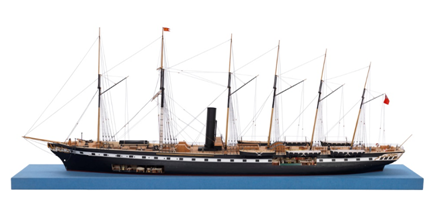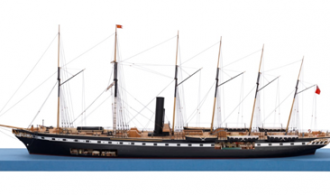In its heyday the SS Great Britain was one of the finest ships to sail the seas It was the brainchild of Isambard Kingdom Brunel the Victorian master engineer and designer. Great Britain was the longest, fastest, it only took fourteen days to reach New York and radical ship that enter the ocean for ten years after its launch in eighteen forty five. You won’t get it in your house but there are many model kits available both of the SS Great Britain and other ships and historic vehicles. Perhaps if you have been looking at loft conversions Bristol companies such as http://www.caineslofts.co.uk/ you may be able to sit in comfort in your newly converted loft and marvel at your model.
Brunel decide that he would look to combine the iron ship with the screw propeller system. He was immediately told by his peers that it would work. He was used to that, so he ploughed on anyway. Crowds turned up to see the launch of the ship fully expecting to see it slide of the runners, enter the Bristol Channel and then sink majestically beneath the waves. It did not and became the premier for of transport between Bristol and New York. It sometimes took as long to get to Bristol from London as it did to get to New York.

The Great Britain had a might engine powering her along was a steam engine. Brunel had been told that there was no way you could get the amount of coal needed for the trip. Brunel, again paid them no heed and he was right in his calculations. As with all this at that time though they also had a secondary sail system, just in case.
She only got to sail to the Americas for three years as financial problems, not helped by the crew running her aground after failing to read a map properly. It cost a fortune to refloat her and bring her home. She was sold cheaply but restored and help to take thousands of brave immigrants to settle in Australia. In 1881 the owners were fed up with the amount of coal it was consuming and switched it over to the full sail. This was fine but the slow-moving ship was not what it once was. Eventually she wound up in the Falkland islands and was used for a variety of things including a warehouse and even a quarantine ship if people were looking a bit peaky. In a great irony she was used as a coal shed for a while before everyone seem to have got bored and scuttle her in 1937.
That was not the end of her story. Many academics and enthusiast realised that she might be a bit significant and following a donation and appeal she was refloated, again and towed back to her Dry dock in Bristol to a hero’s welcome. She’s pretty much restored to her original glory now and is well worth a visit.

